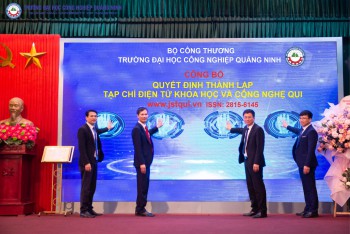Nghiên cứu và phân tích một số công nghệ tích trữ năng lượng tái tạo sử dụng hiện nay trên thế giới
Research and analysis of some renewable energy storage technologies currently used in the world
Tóm tắt
Quá trình tích hợp của các nguồn năng lượng tái tạo vào lưới điện thường đối mặt với những thách thức kỹ thuật như tính ổn định, độ tin cậy và khả năng vận hành của hệ thống lưới. Tuy nhiên, để thực hiện cuộc cách mạng năng lượng và đạt được mục tiêu về đỉnh lượng carbon và trung hòa carbon, việc đảm bảo sự tương thích giữa hệ thống điện và các nguồn năng lượng tái tạo là rất quan trọng. Việc triển khai các hệ thống lưu trữ năng lượng (ESS) phụ thuộc vào nhiều yếu tố như vị trí địa lý, nguồn cung cấp điện, chi phí liên quan và tác động môi trường. Trong nội dung của bài báo, tác giả trình bày tổng quan về các công nghệ lưu trữ năng lượng tái tạo thông dụng hiện nay và phân tích ưu và nhược điểm của từng công nghệ. Dựa vào đó, các bên liên quan có thể đưa ra các quyết định có kiến thức để thúc đẩy việc áp dụng năng lượng tái tạo và các giải pháp lưu trữ của nó, từ đó góp phần vào một tương lai về năng lượng bền vững hơn.
Từ khóa: Năng lượng tái tạo, công nghệ tích trữ năng lượng, hệ thống tích trữ năng lượng bánh đà, thuỷ điện tích năng, hệ thống tích trữ năng lượng bằng khí nén, lưu trữ năng lượng điện hoá, lưu trữ năng lượng hoá năng.
Từ khóa: Năng lượng tái tạo, công nghệ tích trữ năng lượng, hệ thống tích trữ năng lượng bánh đà, thuỷ điện tích năng, hệ thống tích trữ năng lượng bằng khí nén, lưu trữ năng lượng điện hoá, lưu trữ năng lượng hoá năng.
ABSTRACT:
The integration of renewable energy sources into the power grid often poses technical challenges such as stability, reliability, and grid operation capability. However, achieving compatibility between the electrical system and renewable energy sources is crucial for driving the energy revolution and achieving carbon peak and neutrality goals. The deployment of energy storage systems (ESS) depends on factors such as location, electricity sources, associated costs, and environmental impacts. Within the paper’s content, the author presents an overview of common renewable energy storage technologies currently in use and discusses their respective advantages and disadvantages. By addressing these aspects, stakeholders can make informed decisions to further advance the adoption of renewable energy and its storage solutions, thus contributing to a more sustainable energy future.
Keywords: Renewable energy sources, energy storage system, flywheel energy storage system, pumped hydro system, compressed air energy system, electrochemical energy storage, electrochemical energy storage.
The integration of renewable energy sources into the power grid often poses technical challenges such as stability, reliability, and grid operation capability. However, achieving compatibility between the electrical system and renewable energy sources is crucial for driving the energy revolution and achieving carbon peak and neutrality goals. The deployment of energy storage systems (ESS) depends on factors such as location, electricity sources, associated costs, and environmental impacts. Within the paper’s content, the author presents an overview of common renewable energy storage technologies currently in use and discusses their respective advantages and disadvantages. By addressing these aspects, stakeholders can make informed decisions to further advance the adoption of renewable energy and its storage solutions, thus contributing to a more sustainable energy future.
Keywords: Renewable energy sources, energy storage system, flywheel energy storage system, pumped hydro system, compressed air energy system, electrochemical energy storage, electrochemical energy storage.
Tài liệu tham khảo:
1. Baky, M. A. H., Rahman, M. M., & Islam, A. S. (2017). Development of renewable energy sector in Bangladesh: Current status and future potentials. Renewable and Sustainable Energy Reviews, 73, 1184-1197.2. Patel, M., Zhang, X., & Kumar, A. (2016). Techno-economic and life cycle assessment on lignocellulosic biomass thermochemical conversion technologies: A review. Renewable and Sustainable Energy Reviews, 53, 1486-1499.
3. Zhang, X., & Li, J. R. (2023). Recovery of greenhouse gas as cleaner fossil fuel contributes to carbon neutrality. Green Energy & Environment, 8(2), 351-353.
4. Jahanger, A., Ozturk, I., Onwe, J. C., Joseph, T. E., & Hossain, M. R. (2023). Do technology and renewable energy contribute to energy efficiency and carbon neutrality? Evidence from top ten manufacturing countries. Sustainable Energy Technologies and Assessments, 56, 103084.
5. Wang, J., Shahbaz, M., Dong, K., & Dong, X. (2023). Renewable energy transition in global carbon mitigation: Does the use of metallic minerals matter?. Renewable and Sustainable Energy Reviews, 181, 113320.
6. Deshmukh, M. K. G., Sameeroddin, M., Abdul, D., & Sattar, M. A. (2023). Renewable energy in the 21st century: A review. Materials Today: Proceedings, 80, 1756-1759.
7. Amir, M., Deshmukh, R. G., Khalid, H. M., Said, Z., Raza, A., Muyeen, S. M., ... & Sopian, K. (2023). Energy storage technologies: An integrated survey of developments, global economical/environmental effects, optimal scheduling model, and sustainable adaption policies. Journal of Energy Storage, 72, 108694.
8. Xiao, Y., Wu, W., Wang, X., Qu, Y., & Li, J. (2023). Economic potentials of energy storage technologies in electricity markets with renewables. Energy Storage and Saving, 2(1), 370-391.
9. Rana, M. M., Uddin, M., Sarkar, M. R., Meraj, S. T., Shafiullah, G. M., Muyeen, S. M., ... & Jamal, T. (2023). Applications of energy storage systems in power grids with and without renewable energy integration—A comprehensive review. Journal of Energy Storage, 68, 107811.
10. Zhang, Z., Ding, T., Zhou, Q., Sun, Y., Qu, M., Zeng, Z., ... & Chi, F. (2021). A review of technologies and applications on versatile energy storage systems. Renewable and Sustainable Energy Reviews, 148, 111263.
11. Alem, Abraham & Kalogiannis, Theodoros & Van Mierlo, Joeri & Berecibar, Maitane. (2022). A comprehensive review of stationary energy storage devices for large scale renewable energy sources grid integration. Renewable and Sustainable Energy Reviews. 159. 112213. 10.1016/j.rser.2022.112213.
12. Achkari, O., & El Fadar, A. (2018). Renewable Energy Storage Technologies-A. Proceedings of Engineering and Technology–PET, 35, 69-79.
13. https://sandia.gov/ess-ssl/gesdb/public/projects.html
14. https://www.osti.gov/servlets/purl/1866526
15. Zhao, H., Wu, Q., Hu, S., Xu, H., & Rasmussen, C. N. (2015). Review of energy storage system for wind power integration support. Applied energy, 137, 545-553.
16. https://moit.gov.vn/tin-tuc/phat-trien-nang-luong/tiem-nang-phat-trien-nang-luong-tai-tao-cua-viet-nam.html
17. Rahman, M. M., Oni, A. O., Gemechu, E., & Kumar, A. (2020). Assessment of energy storage technologies: A review. Energy Conversion and Management, 223, 113295.
Ý kiến bạn đọc
Bạn cần đăng nhập với tư cách là Thành viên chính thức để có thể bình luận
Tin xem nhiều
-
 Trường Đại học Công nghiệp Quảng Ninh long trọng tổ chức Lễ công bố Quyết định thành lập Tạp chí điện tử Khoa học và Công nghệ
Trường Đại học Công nghiệp Quảng Ninh long trọng tổ chức Lễ công bố Quyết định thành lập Tạp chí điện tử Khoa học và Công nghệ
- Cán bộ, đảng viên với việc tu dưỡng đạo đức cách mạng trong điều kiện kinh tế thị trường định hướng xã hội chủ nghĩa ở Vệt Nam hiện nay
- Lồng ghép giáo dục kỹ năng sống cho học sinh THPT thông qua các chủ đề hóa học
- Áp dụng mô hình “Blended learning” trong giảng dạy tiếng Anh cho sinh viên Trường Đại học Công nghiệp Quảng Ninh
- Giải pháp nâng cao hiệu quả công tác quản lý giáo dục sinh viên năm thứ nhất tại Trường Đại học Công nghiệp Quảng Ninh
- Nghiên cứu lỗi của động cơ không đồng bộ roto lồng sóc 3 pha1,5kw 4 cực trong trường hợp sự cố thanh dẫn roto
- Xây dựng định mức năng suất và tiêu hao vật tư cho thiết bị khai thác và tuyển quặng tại tổ hợp dự án bô-xit Tân Rai và Nhân Cơ - TKV
- Phân tích và thiết kế bộ điều khiển hệ thống phân loại sản phẩm ứng dụng Logic mờ
- Áp dụng mô hình ARDL để xác định mối quan hệ giữa FDI, tiến trình công nghiệp hóa và tăng trưởng kinh tế của tỉnh Quảng Ninh
- Nghiên cứu mô hình Blended learning trong dạy học toán cao cấp tại Trường Đại học Công nghiệp Quảng Ninh

